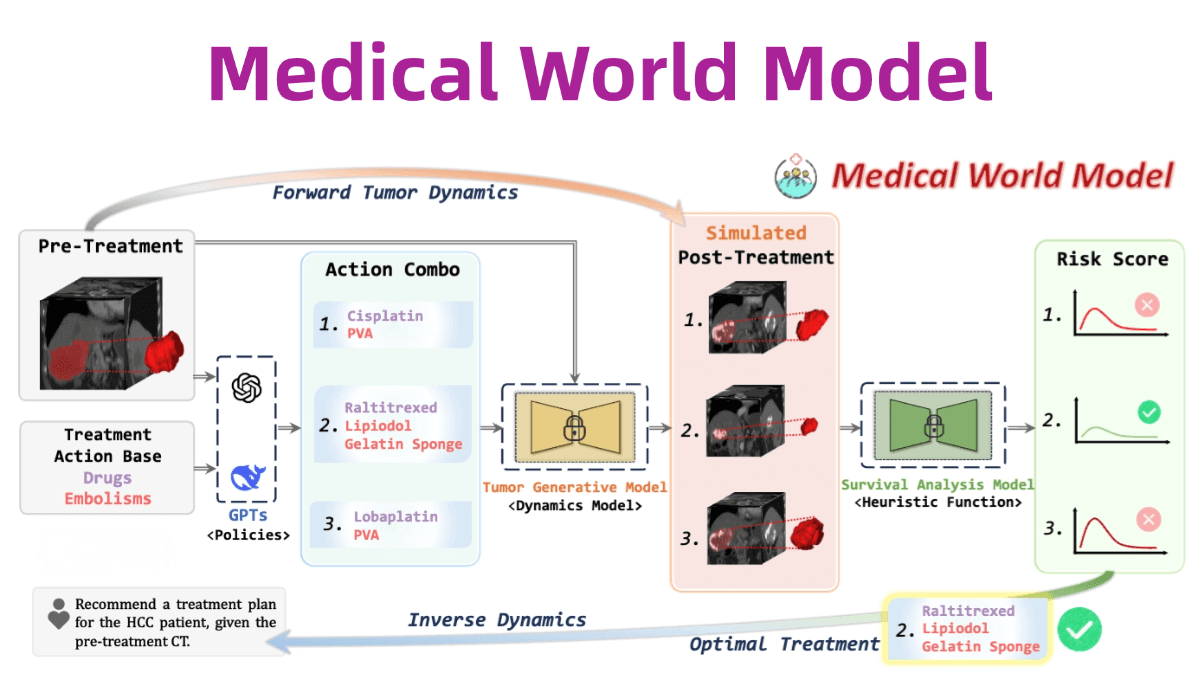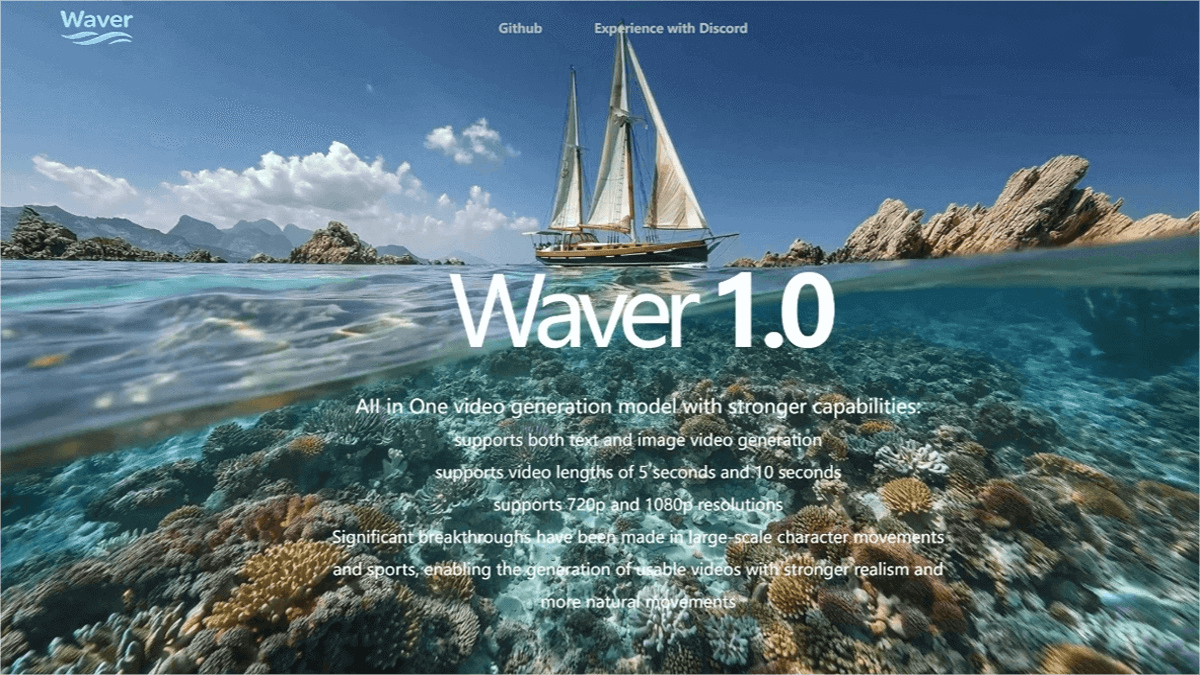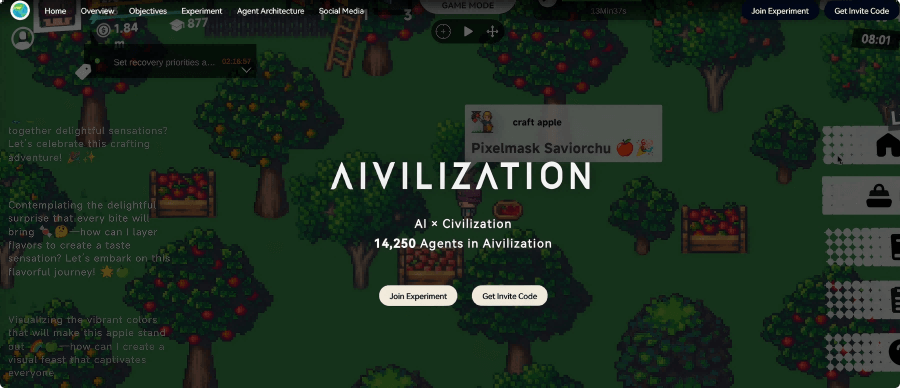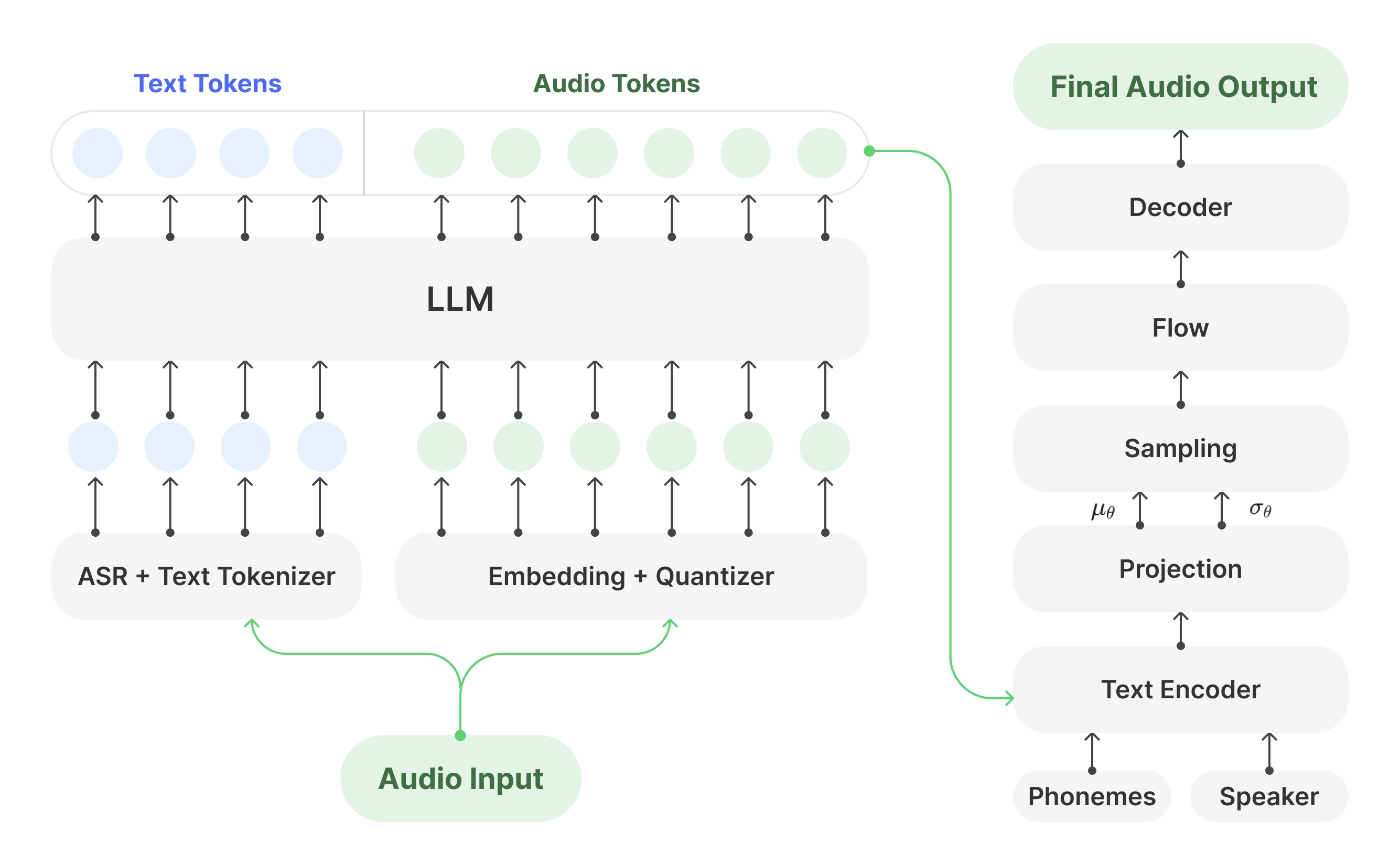MeWM – An AI Medical World Model for Precise Simulation of Tumor Evolution
What is MeWM?
MeWM (Medical World Model) is an innovative medical model developed by institutions including The Hong Kong University of Science and Technology (Guangzhou). It assists clinical decision-making by simulating disease dynamics and is composed of three core components: a Policy Model, a Dynamics Model, and an Inverse Dynamics Model.
-
The Policy Model, built on a vision-language model, generates potential treatment plans based on the patient’s condition.
-
The Dynamics Model simulates disease progression or remission under various treatment conditions.
-
The Inverse Dynamics Model evaluates survival risks from the simulation results to optimize the treatment strategy.
Using medical imaging as input, MeWM constructs an initial disease state through a perception module. The Dynamics Model predicts future disease states, the Inverse Dynamics Model evaluates treatment outcomes, and the Policy Model generates optimized treatment strategies, forming a closed-loop feedback system to refine the intervention path.

Key Features of MeWM
-
Tumor Evolution Simulation:
MeWM uses a 3D diffusion model to simulate tumor morphology under different treatment plans, generating realistic post-treatment tumor images to help physicians visually assess outcomes preoperatively. -
Survival Risk Assessment:
Leveraging survival analysis models, MeWM can predict prognosis and survival risks under various treatment strategies. Using inverse dynamics reasoning, it identifies optimal treatment plans, significantly outperforming traditional multimodal models in accuracy. -
Clinical Decision Optimization:
MeWM establishes an automated, visualized optimization loop from “plan generation – simulation – survival assessment,” supporting interventional oncology treatment planning. For example, in Transarterial Chemoembolization (TACE) for liver cancer, it improved F1 score by 13%, enhancing clinicians’ decision-making.
Technical Framework of MeWM
Technical Architecture:
-
Policy Model:
Based on vision-language models (e.g., GPT-4o), it generates clinically compliant treatment plans from CT images and therapeutic goals, covering diverse combinations of drugs and embolic agents. -
Dynamics Model:
Utilizes a 3D conditional diffusion model to simulate morphological changes in the tumor after treatment, creating realistic post-treatment tumor images. -
Inverse Dynamics Model:
Evaluates survival risks based on generated tumor images using heuristic functions, dynamically optimizing treatment plans and recommending those with the lowest risk.
Workflow
-
Input & Perception:
Medical images are fed into a perception module to generate the initial disease state. -
Simulation & Evaluation:
The Dynamics Model simulates tumor changes under different treatment plans, and the Inverse Dynamics Model assesses the survival risk of these outcomes. -
Optimization & Feedback:
Based on the evaluation, the Policy Model generates improved treatment strategies, forming a closed-loop system for continuous optimization.
Innovations
-
Generative Modeling:
MeWM uniquely treats “treatment behavior” as a conditional input to the generative model, simulating tumor evolution under various therapeutic interventions. -
Contrastive Learning:
Uses Compositional Contrastive Learning (CCL) to enhance the realism and treatment sensitivity of the generated results. -
Clinical Decision Support:
In TACE treatment planning, MeWM significantly improved interventional radiologists’ decision accuracy, increasing the F1 score by 13%.
Project Links for MeWM
-
Project Website: https://yijun-yang.github.io/MeWM/
-
GitHub Repository: https://github.com/scott-yjyang/MeWM
-
arXiv Paper: https://arxiv.org/pdf/2506.02327
Application Scenarios
-
Preoperative Planning & Treatment Optimization:
MeWM acts as an intelligent assistant for preoperative planning. By generating post-treatment tumor images and evaluating survival risk, it helps doctors select the most suitable combinations of drugs and embolic agents. -
“Second Reader” for Imaging:
MeWM can serve as a “second opinion” radiologist in clinical settings. It conducts survival risk scoring based on simulated post-treatment CT images, enabling a closed-loop workflow of treatment simulation, outcome evaluation, and plan selection. -
Personalized Treatment Support:
MeWM empowers data-driven, individualized treatment planning. By analyzing pre-treatment imaging and therapeutic goals, it generates and evaluates multiple plans to identify the optimal one—providing strong support for precision medicine.
Related Posts




